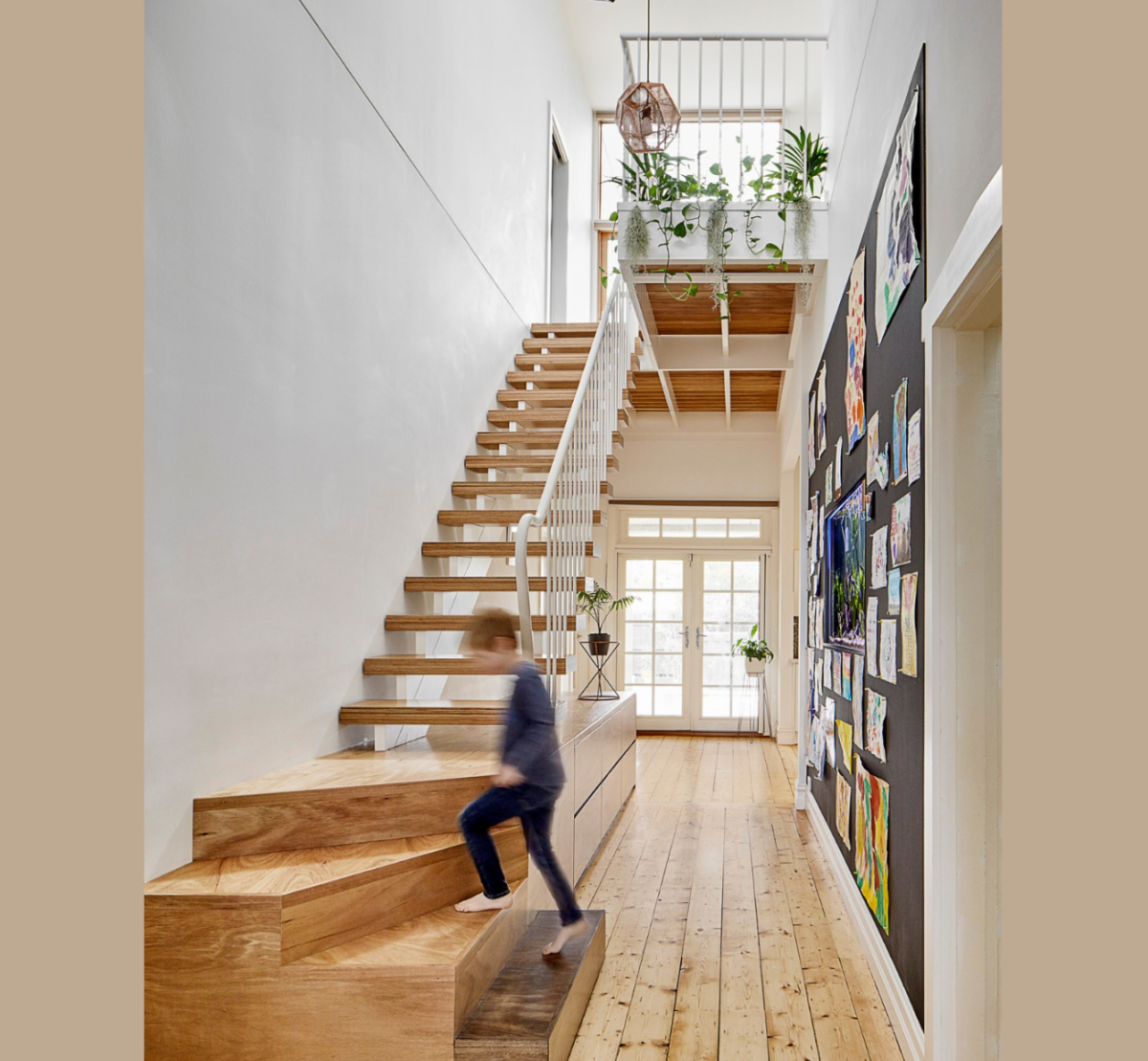Can you build an extension without an architect?
You’ve run out of space, the kids need their own rooms, and the Melbourne property market makes moving a daunting prospect. Adding an extension sounds easier, right? Yet as you scroll through forums, you notice conflicting advice on whether you need a residential architect Melbourne homeowners trust—or if you can simply engage a draftsperson, lodge a permit, and call it a day. Before you roll up your sleeves or ring the first builder on Google, let’s unpack the realities, regulations, and risks of skipping an architect, and see how Guild Architects’ consultative, sustainable approach could be the key to an enjoyable, on-budget project instead of a costly headache.
Why do some homeowners think they can go architect-free?
At first glance, avoiding an architect seems like a shortcut to saving both time and money. TV renovation shows present design decisions as quick sketches scribbled on napkins, and friends might boast they “just used the builder’s drafts.” The logic sounds tempting: hire a draftsperson for the bare-minimum plans, submit to council, and let the builder handle the rest. But is that perception accurate—or even legal—in Victoria’s tightly regulated building environment?
Let’s consider a relatable analogy. If you need minor car maintenance, you might comfortably do it yourself. Yet when it comes to replacing the engine, the stakes rise, and even seasoned DIY-ers call in a specialist. Your home is no different. An extension alters structural loads, waterproofing layers, natural light paths, and energy consumption for decades to come. Cutting professional corners now can trap you with hidden defects, decreased resale value, or non-compliant work that council could force you to remove entirely.
Data from the Victorian Building Authority (implied 2024 report) reveals that 61 % of residential extension complaints involve projects designed without a registered architect. Most grievances relate to poor documentation leading to cost overruns, unsafe structures, and protracted disputes between homeowner and builder. Clearly, initial savings can evaporate quickly. Still, the question lingers: is it legally compulsory to engage an architect in Melbourne, or merely advisable?
Understanding Melbourne’s legal and regulatory maze
Whether or not you appoint an architect, Victorian law demands your extension comply with both the Building Act 1993 and the Building Regulations 2018. You’ll need:
-
A planning permit (where overlays or zoning conditions apply)
-
A building permit approved by a relevant building surveyor
-
Detailed construction documentation that demonstrates structural sufficiency, energy efficiency, bushfire compliance (if applicable), and accessibility
The regulations do not explicitly insist on an architect; they focus on competent documentation. In theory, a registered draftsperson or even a builder can prepare plans. In practice, however, councils scrutinize complex projects—second-storey additions, heritage façades, environmentally sensitive design—more rigorously. Without robust drawings, energy reports, and material specifications, your application can languish for months.
|
Item |
Prepared by Architect |
Prepared without Architect |
Typical Council Requests for Clarification |
|
Site & floor plans (1:100) |
Comprehensive, coordinated |
Often missing set-backs or overshadowing diagrams |
Provide north point, dimensions, existing vs. proposed outlines |
|
Structural details |
Integrated with engineer’s calculations |
Separate sketches, prone to clashes |
Confirm beam sizes, footing depths, load paths |
|
Energy rating report (NatHERS) |
Specified insulation, glazing, shading solutions |
Generic “to comply” notes |
Show thermal performance, window schedule |
|
Specifications & schedules |
Detailed, performance-based |
Minimal; reliant on builder’s interpretation |
List materials, finishes, waterproofing method |
Notice how the “Prepared without Architect” column often correlates with council requests—for extra drawings, clarifications, and guarantee letters—which elongates approval time. Ultimately, while the law offers flexibility, practical compliance pressures all but nudge homeowners toward professional design leadership.
The evolving role of a Residential Architect Melbourne homeowners trust
So why engage a residential architect at all? Beyond stamping drawings, architects solve layered puzzles: aesthetics, functionality, cost, and future adaptability. Modern Melbourne households juggle home offices, multi-generational living, and sustainability goals. An architect translates those ambitions into spatial strategies that feel effortless—extra storage tucked beneath a stair, solar access optimized through clerestory windows, recycled brickwork that echoes the suburb’s heritage character.
Importantly, architects like Guild Architects champion client involvement rather than design dictation. Through workshops, mood boards, and 3D walk-throughs, you become a co-author of your extension, not a bystander. That collaboration reduces “design regret” and project changes mid-build—two major causes of budget blowouts among architect-free projects.
According to an informal survey by ArchiTeam Cooperative (2023), projects designed and administered by an architect delivered an average 8 % cost saving against the original contract sum, while non-architect projects recorded 18 % overruns. The difference lies in early-stage cost checks, clear documentation, and tender competitiveness—areas where an architect’s foresight pays dividends.
Cost-Benefit Analysis: Architect vs. No-Architect
Money remains the primary motivator for avoiding architects, yet figures tell a nuanced story. Let’s compare a hypothetical $350,000 ground-floor extension—two bedrooms, a bathroom, and an open-plan living area—undertaken in Melbourne’s inner north.
|
Category |
With Guild Architects |
Without Architect |
|
Design & documentation fees |
$31k–$38k (9–11 %) |
$8k–$12k (drafting & permit) |
|
Council approval timeline |
8–10 weeks (average) |
14–20 weeks (incl. RFI delays) |
|
Construction cost overruns |
3–8 % contingency used |
15–20 % contingency used |
|
Energy bills (10 yr projection) |
$19k |
$27k |
|
Resale value uplift |
+12 % above suburb median |
+4 % above suburb median |
|
Risk of non-compliance notice |
Low |
Moderate-High |
Even with higher upfront design fees, the architect-led path often emerges cheaper across the project lifecycle, thanks to energy savings, faster approvals, and tighter cost control. Moreover, intangible benefits—reduced stress, cohesive aesthetics, and pride of place—rarely show up in spreadsheets yet profoundly affect daily living.
How Guild Architects simplifies the journey
Guild Architects, spearheaded by director Penny Guild, understands that homeowners crave creativity and certainty. Their difference lies in six pillars:
-
Sustainable design first – Passive solar orientation, recycled materials, high-performance glazing, and low-VOC finishes form the baseline, not an optional upgrade.
-
Consultative workshops – Clients engage in charrettes—hands-on sessions where ideas flow freely, ensuring the design reflects personal quirks, from cycling storage to backyard beehives.
-
Timeline & budget guardianship – Milestone cost checks and a curated builder tender list safeguard financial and program targets.
-
Director-level involvement – Penny guides every project phase, so you’re never handed to junior staff after the initial meeting.
-
End-to-end project management – Administering the construction contract, Guild acts as impartial adjudicator, certifying progress claims and quality standards.
-
Client empowerment – Regular site walk-throughs and clear communication turn jargon-ridden processes into transparent, shared decisions.
Consider the Northcote Lightwell House (case study, 2023). The clients initially sought a builder-drafted design, concerned an architect might “blow the budget.” After discovering Guild Architects at an open-house event, they pivoted. Through iterative sketch-models and thermal simulations, Guild transformed a boxy add-on into a sunlight-filled pavilion with a green roof. The build finished two weeks early, only 4 % over the original budget—well within the 10 % contingency—and achieved an 8.1-star NatHERS rating that shaved $480 annually off energy bills. The clients credit weekly video calls with Penny and transparent cost tracking for keeping stress levels (and finances) in check.
Still determined to proceed architect-free? Critical tips to mitigate risk
While we firmly believe professional design from an experienced residential architect unlocks the best results, informed homeowners make better choices. If budget truly precludes hiring an architect, protect yourself with the following measures:
-
Engage a registered building designer with at least 10 completed extensions in your council area.
-
Obtain an independent quantity surveyor’s estimate before signing any builder contract.
-
Commission a structural engineer early; do not rely on builder “rule-of-thumb.”
-
Request fixed-price allowances for joinery, tiles, and fittings to curb variation costs.
-
Schedule fortnightly site inspections with the building surveyor to verify compliance.
-
Allocate a 20 % contingency fund—you’ll likely need it.
Even then, remember these steps patch gaps rather than provide holistic design leadership. If the process starts feeling overwhelming, many families circle back to an residential architect mid-build—often when rectifying mistakes costs more than the original design fee.
Conclusion
In Melbourne’s regulatory context, you can legally build an extension without hiring an architect, but “can” and “should” are worlds apart. Lack of architectural input frequently triggers longer approval times, higher construction overruns, energy inefficiencies, and latent defects. A Melbourne architect residents trust—especially one like Guild Architects that prioritises sustainability, budget discipline, and client participation—acts as both creative guide and risk manager. By investing in thoughtful design and rigorous documentation up-front, you safeguard your finances, peace of mind, and the enduring value of your most significant asset: your home.
Ready to Take Your residential architect melbourne to the Next Level?
At Guild Architects, we're experts in residential architect melbourne. We help businesses overcome homeowners seeking sustainable, high-quality architecture often struggle to find designs that balance aesthetics, functionality, budget, and timeline. through guild architects addresses this by providing a consultative approach, ensuring each project is tailored to the client’s priorities, from sustainable design to strict adherence to budget and schedule requirements.. Ready to take the next step?



